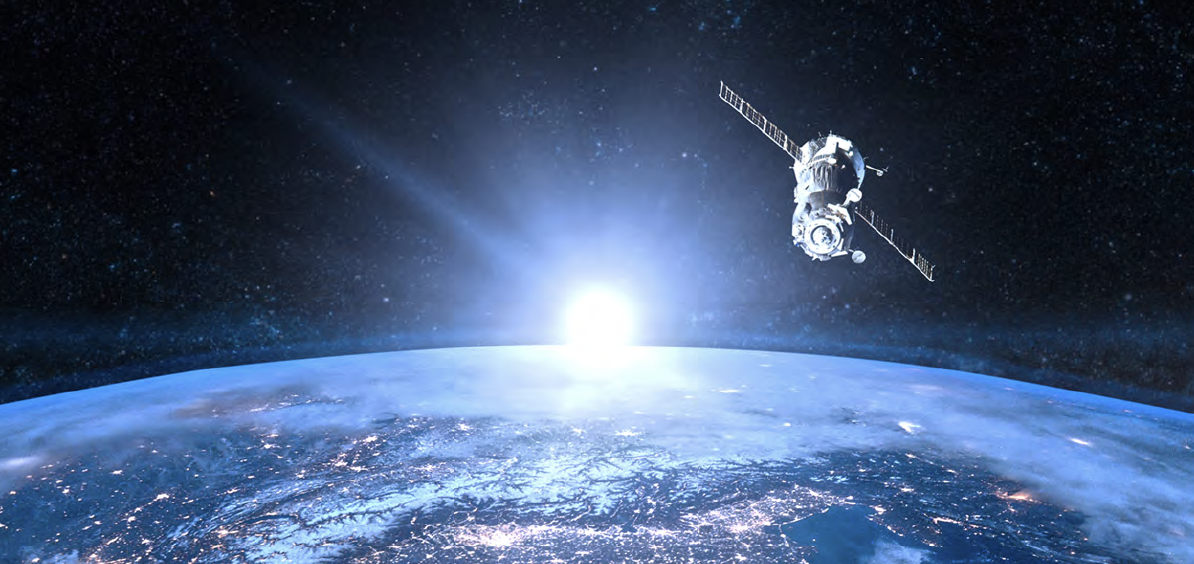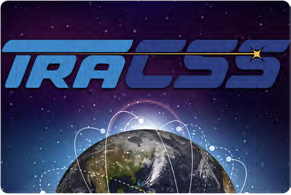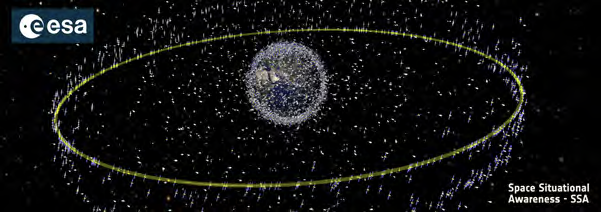With the number of objects in space increasing year on year, both in terms of satellites and space debris, keeping assets safe and preventing collisions is becoming increasingly challenging.

There is a growing need for more effective Space Situational Awareness (SSA), which is the ability to understand and maintain awareness of the space environment, in order to detect and track objects in space and predict where they will be in the future, so that collisions can be prevented.
SSA is a rapidly growing sector driven by a huge increase in the number of satellites launched, as well as the growing space debris problem. One analyst recently reported that the global SSA market is expected to increase from $2.2 billion in 2025 to $3.18 billion by 2032, a CAGR of 5.4%. The report also notes that the collision avoidance segment of the SSA market is likely to experience the highest growth.
A growing number of private companies are now offering SSA services to satellite operators and other stakeholders, and at the same time, governmental offerings are also now delivering more SSA capabilities than ever before.
Are these evolving public offerings thorough enough for current and future in-orbit demands, or do commercial SSA offerings still go beyond what is available as a public service? Current Landscape

Innovation and technological advances are significantly boosting SSA capabilities, with developments being noted in space-based sensors that promise to detect and track much smaller objects than current systems allow.
Many private companies, such as Spaceflux, Scout Space, NorthStar and LeoLabs, now operate in the field of SSA. These organizations are leveraging advanced ground based and optical sensors, space-based systems, and AI-driven analytics to track space objects and provide services such as collision warnings.
Government entities around the world have also been working to enhance their SSA capabilities and service provision. In the U.S., the U.S. Department of Commerce’s Office for Space Commerce is developing the Traffic Coordination System for Space (TraCSS) system, which will provide SSA services and information to public and private spacecraft operators around the world. TraCCS is set to replace the Department of Defence’s existing Space-Track system by the end of this year. The new system is currently reliant on information from the DoD but, in time, will supplement that with data from commercial sources.
In the European Union, a key component of the European Space Agency’s (ESA) Space Situational Awareness Programme, is the EU SST (Space Surveillance and Tracking) which is designed to provide data, information and services relating to the surveillance and tracking of space objects that orbit the Earth.
The EU SST provides collision avoidance, re-entry analysis and fragmentation analysis services to satellite operators and owners. Previously, the service was only available to organisations within EU member states, but it is now open to international users.

A study, jointly carried out by members of the United States TraCSS program and the EU SST program, tasked with carrying out a technical comparison of the public SSA services in the U.S. and EU, found that, although there are some differences, the services provided by these systems are largely in alignment. Both systems expect that public provision will continue to evolve along with the changing needs of the space industry.
Also important to mention here is the Space Data Association (SDA), which is a fully independent and non-commercial entity. The SDA is an international organization bringing together satellite operators from around the world to support the controlled, reliable and efficient sharing of data critical to the safety and integrity of the space environment.
As a non-profit, and non-partisan organization, it’s free from government affiliation and driven solely by the needs of its members. The SDA aims to be a central hub for receiving, processing, and sharing vital space data across civil, commercial, and military sectors. Challenges Around SSA Provision
Satellite operators face a complex landscape of risks, and operators need accurate insights in order to make smart, timely decisions about their satellites.
However, obtaining these insights is not straightforward because, despite SSA offerings improving, several challenges continue to exist in the provision of SSA services.
If SSA providers are operating their own proprietary systems, there may well be inconsistencies and discrepancies in data. Differing data outcomes regarding where object will be located are often reached by various companies. This is definitely problematic as collision avoidance maneuvers are costly for operators and this makes it critical that the decision used to inform them is totally accurate and reliable.

Data sharing is another major hurdle in SSA because, understandably, many operators, particularly those working in the civil and defence sectors, are unwilling and prohibited from sharing sensitive data.
These concerns around data misuse can prevent operators from contributing to wider situational awareness efforts. Additionally, when operators do share ephemeris data, it can vary in quality, which can result in covariances being provided. These covariances then need to be validatedand that is quite challenging. Another challenge in SSA today is the time limited scope of Special Perturbation (SP) data made available to the satellite operators, which is currently limited to five days. This makes it challenging to conduct long-term actionable screening.
Although some commercial SSA providers do have their own sensors, many rely on SP data which often lacks crucial information on satellite maneuvers and thereby reduces the accuracy and reliabilities for orbit predictions, collision monitoring and detection. Final Thoughts
Accurate SSA data is critical. Yet, even while SSA offerings are constantly improving, major data gaps, both in what is shared and what is received, continue to hinder effective monitoring and decision-making.
The SDA is actively working to tackle key SSA challenges through a range of measures. These include:
Maneuver detection Developing synthetic covariance models based on available SP data to account for unreported maneuvers and improve the its usefulness for collision monitoring Providing standardization tools and using third-party observations to identify and correct potential biases to manage variances in ephemeris submissions.
Processing raw observation data and planned maneuvers internally to maintain a steady flow of accurate orbital information even when operators are unable to submit regular ephemeris updates.
The SDA works to break the barriers of data sharing by ensuring effective and safe technical infrastructure to ensure security and data access as well as legal structure and agreements that provide protection and enforcement to prevent data misused.
SSA is an incredibly complex field and is not something any one service provider can deliver in isolation. As space becomes ever more congested, the future success of SSA will depend on continued collaboration between civil, private, and independent entities. Achieving safer orbits and space sustainability requires shared responsibility, open innovation, and trusted frameworks that can evolve with the needs of the satellite industry.
www.space-data.org/sda/

Joe Chan
Joe Chan is Director of Flight Dynamics at Intelsat. He oversees the FDS operation and engineering of more than 70 geostationary satellites that Intelsat currently operates. He has been with Intelsat for 24 years. Prior to joining Intelsat he worked at Goddard Space Flight center on the TOPEX/POSEIDON and Mars Observer projects.

